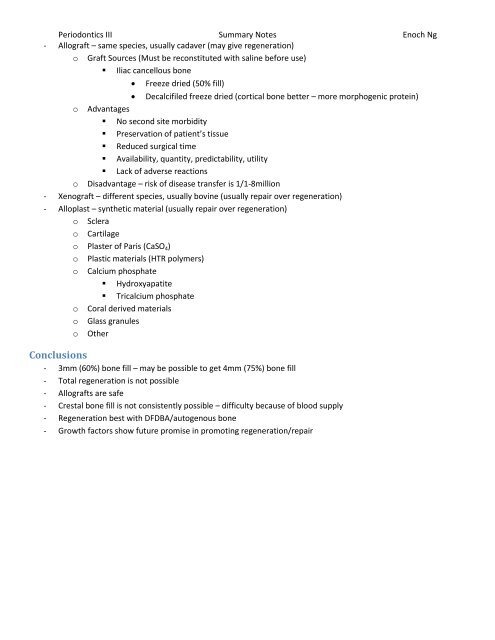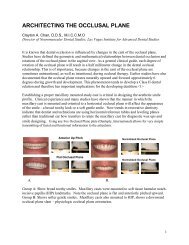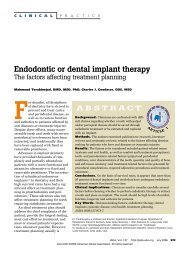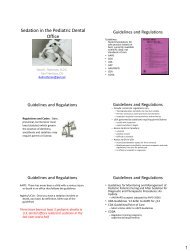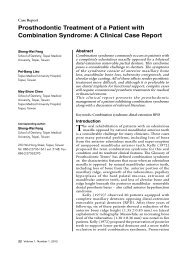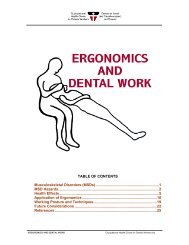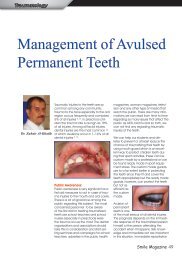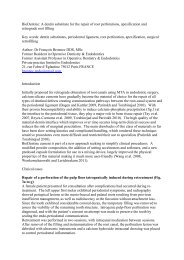Perio_III
Perio_III
Perio_III
You also want an ePaper? Increase the reach of your titles
YUMPU automatically turns print PDFs into web optimized ePapers that Google loves.
<strong>Perio</strong>dontics <strong>III</strong> Summary Notes Enoch Ng<br />
- Allograft – same species, usually cadaver (may give regeneration)<br />
o Graft Sources (Must be reconstituted with saline before use)<br />
• Iliac cancellous bone<br />
<br />
Freeze dried (50% fill)<br />
Decalcifiled freeze dried (cortical bone better – more morphogenic protein)<br />
o Advantages<br />
• No second site morbidity<br />
• Preservation of patient’s tissue<br />
• Reduced surgical time<br />
• Availability, quantity, predictability, utility<br />
• Lack of adverse reactions<br />
o Disadvantage – risk of disease transfer is 1/1-8million<br />
- Xenograft – different species, usually bovine (usually repair over regeneration)<br />
- Alloplast – synthetic material (usually repair over regeneration)<br />
o Sclera<br />
o Cartilage<br />
o Plaster of Paris (CaSO 4 )<br />
o Plastic materials (HTR polymers)<br />
o Calcium phosphate<br />
• Hydroxyapatite<br />
• Tricalcium phosphate<br />
o Coral derived materials<br />
o Glass granules<br />
o Other<br />
Conclusions<br />
- 3mm (60%) bone fill – may be possible to get 4mm (75%) bone fill<br />
- Total regeneration is not possible<br />
- Allografts are safe<br />
- Crestal bone fill is not consistently possible – difficulty because of blood supply<br />
- Regeneration best with DFDBA/autogenous bone<br />
- Growth factors show future promise in promoting regeneration/repair


